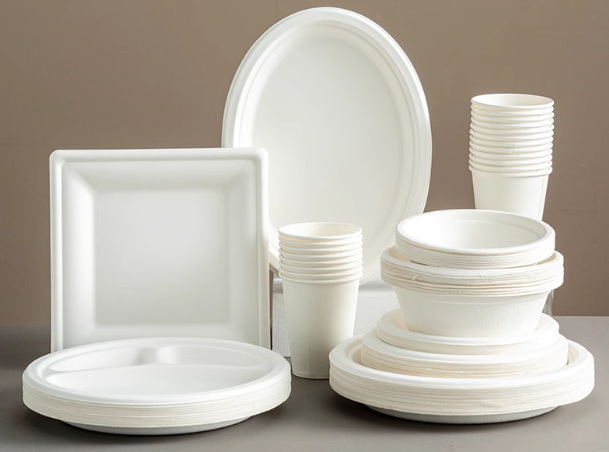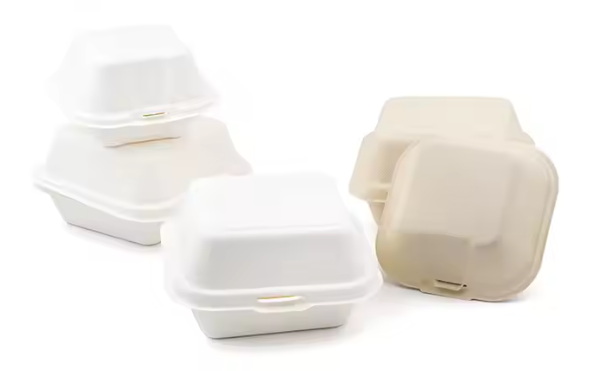
Content Menu
● Introduction to Disposable Tableware
>> Types of Disposable Plates
● Safety Considerations for Quality Disposable Plates
● Quality Disposable Cutlery
>> Types of Disposable Cutlery
● Benefits of Quality Disposable Plates and Cutlery
● Environmental Impact
>> Sustainable Alternatives
● Innovations in Disposable Tableware
● Consumer Preferences and Market Trends
● Regulatory Frameworks
● Conclusion
● FAQs
>> 1. Are Quality Disposable Plates Safe for Hot Foods?
>> 2. Can Disposable Cutlery Be Reused?
>> 3. What Are the Environmental Benefits of Biodegradable Plates?
>> 4. How Do I Choose the Right Type of Disposable Plate?
>> 5. Are Palm Leaf Plates Durable Enough for Outdoor Events?
● Citations:
In recent years, the use of disposable plates and cutlery has become increasingly popular due to their convenience and ease of use. However, concerns about their safety and environmental impact have also grown. This article will delve into the safety of using quality disposable plates and cutlery for various food types, exploring their materials, benefits, and potential risks.

Introduction to Disposable Tableware
Disposable tableware, including plates and cutlery, is designed for single-use purposes, offering a convenient alternative to traditional reusable options. They are commonly used in events, parties, and outdoor gatherings where cleaning facilities may be limited. The primary materials used for disposable plates and cutlery include plastic, paper, bioplastics, and natural materials like palm leaves.
Types of Disposable Plates
1. Plastic Plates: These are durable and versatile, suitable for both hot and cold foods. They are often made from food-grade plastics and are available in BPA-free options to minimize health risks. Plastic plates are widely used due to their affordability and strength, making them ideal for large events.
2. Paper Plates: Ideal for cold or dry foods, paper plates are lightweight and cost-effective. Some are coated with wax or plastic for better durability. However, they may not be suitable for hot or oily foods as they can become soggy.
3. Biodegradable Plates: Made from materials like bagasse or bamboo, these plates are eco-friendly and suitable for hot foods. They offer a sustainable alternative to traditional plastic plates, reducing environmental waste.
4. Palm Leaf Plates: These are made from naturally fallen palm leaves and are compostable, offering a sustainable option. Palm leaf plates are durable and can handle a variety of foods, including hot dishes.
Safety Considerations for Quality Disposable Plates
When it comes to the safety of disposable plates, the material and handling are crucial. Here are some key considerations:
- Material Safety: Ensure that the plates are made from food-grade materials. For plastic plates, opt for BPA-free options to avoid potential health risks. BPA (Bisphenol A) is a chemical that can leach into food, especially when heated, and has been linked to health issues.
- Temperature Resistance: Some disposable plates, like those made from bioplastics or certain types of plastic, can withstand high temperatures. However, it's essential to check the manufacturer's guidelines for microwave or oven use to avoid any damage or chemical leaching.
- Chemical Leaching: Avoid exposing plastic plates to high heat, as this can cause chemicals to leach into food. This is particularly important when serving hot or oily foods.
Quality Disposable Cutlery
Disposable cutlery is also widely used, offering convenience and hygiene benefits. The materials used include plastic, wood, and bioplastics.
Types of Disposable Cutlery
1. Plastic Cutlery: Commonly used due to its strength and affordability, plastic cutlery is not the most eco-friendly option. However, it is durable and suitable for a wide range of foods.
2. Wooden Cutlery: Offers a sustainable alternative with a natural aesthetic, though it may not be as durable as plastic. Wooden cutlery is biodegradable and compostable, reducing waste.
3. Biodegradable Cutlery: Made from materials like cornstarch or sugarcane, these are more environmentally friendly and can handle hot foods. Biodegradable cutlery is a popular choice for events aiming to reduce their environmental footprint.
Benefits of Quality Disposable Plates and Cutlery
- Hygiene: Disposable tableware reduces the risk of cross-contamination, making it ideal for large gatherings or events where sanitation might be challenging. This is particularly important in settings where food is served to a large number of people.
- Convenience: Easy to use and dispose of, reducing cleanup efforts. This convenience is especially appreciated in outdoor events or parties where access to washing facilities may be limited.
- Aesthetics: Available in various designs and styles, enhancing the visual appeal of events. Disposable plates and cutlery can be customized to match event themes, adding to the overall ambiance.

Environmental Impact
While disposable plates and cutlery offer convenience, their environmental impact is significant. Plastic plates contribute to waste and pollution, while biodegradable options are more eco-friendly.
Sustainable Alternatives
- Compostable Plates: Made from materials like bagasse or palm leaves, these plates decompose naturally and are a sustainable choice. They reduce waste and can be composted at home or in community gardens.
- Recyclable Plastic: Some plastic plates are recyclable, reducing waste when disposed of properly. However, recycling infrastructure varies by region, so it's important to check local recycling guidelines.
Innovations in Disposable Tableware
Recent innovations have led to the development of more sustainable disposable tableware options. For instance, bioplastics made from renewable resources like cornstarch or sugarcane are becoming increasingly popular. These materials are biodegradable and compostable, offering a greener alternative to traditional plastics.
Moreover, advancements in manufacturing processes have improved the durability and functionality of disposable plates and cutlery. For example, some biodegradable plates can now withstand high temperatures without compromising their integrity, making them suitable for a wider range of applications.
Consumer Preferences and Market Trends
Consumer preferences are shifting towards more sustainable options, driving demand for eco-friendly disposable tableware. As awareness about environmental issues grows, companies are responding by developing products that are both convenient and environmentally responsible.
In the market, there is a noticeable trend towards biodegradable and compostable products. Consumers are willing to pay a premium for products that align with their values of sustainability and environmental stewardship. This trend is expected to continue as consumers become more conscious of their purchasing decisions.
Regulatory Frameworks
Regulatory frameworks play a crucial role in ensuring the safety and sustainability of disposable tableware. Governments worldwide are implementing policies to reduce plastic waste and promote the use of biodegradable materials. For instance, some countries have banned single-use plastics, encouraging the adoption of sustainable alternatives.
These regulations not only impact consumer behavior but also drive innovation in the industry. Companies must comply with these regulations while maintaining product quality and affordability, which can lead to the development of more innovative and sustainable solutions.
Conclusion
Quality disposable plates and cutlery are safe for use with various food types when chosen wisely. It's crucial to select materials that are food-grade and suitable for the intended use. While they offer convenience and hygiene benefits, their environmental impact should not be overlooked. Opting for sustainable alternatives like biodegradable or compostable options can help mitigate this issue.

FAQs
1. Are Quality Disposable Plates Safe for Hot Foods?
Yes, quality disposable plates made from materials like bioplastics or certain types of plastic are safe for hot foods. However, always check the manufacturer's guidelines for temperature limits.
2. Can Disposable Cutlery Be Reused?
Disposable cutlery is designed for single use and should not be reused for hygiene and safety reasons.
3. What Are the Environmental Benefits of Biodegradable Plates?
Biodegradable plates, such as those made from bagasse or palm leaves, are compostable and reduce waste, offering a sustainable alternative to traditional plastic plates.
4. How Do I Choose the Right Type of Disposable Plate?
Consider the type of food, durability needs, and environmental impact when selecting disposable plates. For hot or heavy foods, opt for durable materials like plastic or bioplastics. For cold or dry foods, paper plates may suffice.
5. Are Palm Leaf Plates Durable Enough for Outdoor Events?
Yes, palm leaf plates are surprisingly durable and can hold heavy foods without bending or breaking, making them suitable for outdoor events.
Citations:
[1] https://www.freshtableware.in/post/is-it-safe-to-consume-food-served-on-plastic-plates
[2] https://www.factorydirectparty.com/blogs/party-ideas/are-plastic-plates-safe-to-use
[3] https://smartyhadaparty.com
[4] https://www.youtube.com/watch?v=Q0nY1IZHuNI
[5] https://droppe.com/blog/article/how-to-choose-the-right-disposable-cutlery-for-food-service-a-buyers-guide/
[6] https://www.ecogreenolive.com/news/News-releases/8-common-questions-about-pulp-molding-disposable-environmentally-friendly-degradable-tableware.html
[7] https://droppe.com/blog/article/food-utensils-buyer-guide/
[8] https://www.kimecopak.ca/blogs/news/tips-for-using-disposable-utensils-safely
[9] https://www.ecoleafproducts.co.uk/pages/disposable-plates-questions
[10] https://earthware.co.za/pages/faqs
[11] https://diyecobox.com/health-risks-of-paper-plates/
[12] https://www.restaurantware.com/blogs/catering-essentials/disposable-vs-reusable-tableware-for-catering
[13] https://eventableware.com/a-complete-guide-disposable-plates/
[14] https://droppe.com/blog/article/how-to-choose-the-best-material-for-disposable-plates-paper-plastic-or-compostable/
[15] https://www.epd.gov.hk/epd/sites/default/files/epd/english/environmentinhk/waste/pub_consult/files/tableware-con-doc-en.pdf
[16] https://www.info.gov.hk/gia/general/202405/08/P2024050800233.htm
[17] https://news.rthk.hk/rthk/en/component/k2/1752290-20240508.htm
[18] https://www.shutterstock.com/video/search/disposable-plates
[19] https://www.istockphoto.com/photos/disposable-plates
[20] https://www.youtube.com/watch?v=FeFj9l-iuig
[21] https://www.shutterstock.com/search/disposable-plates
[22] https://greentableware.hk/en-us/home/about
[23] https://www.easyngreen.com/eight-common-questions-about-ecofriendly-disposable-utensils.html
[24] https://www.pearsalad.com/catering-menu/disposable-products/
[25] https://www.istockphoto.com/photos/disposable-cutlery
[26] https://www.efavormart.com/collections/disposable-dinnerware
[27] https://www.nisbets.co.uk/usingdisposableplatescutleryandglasses

















